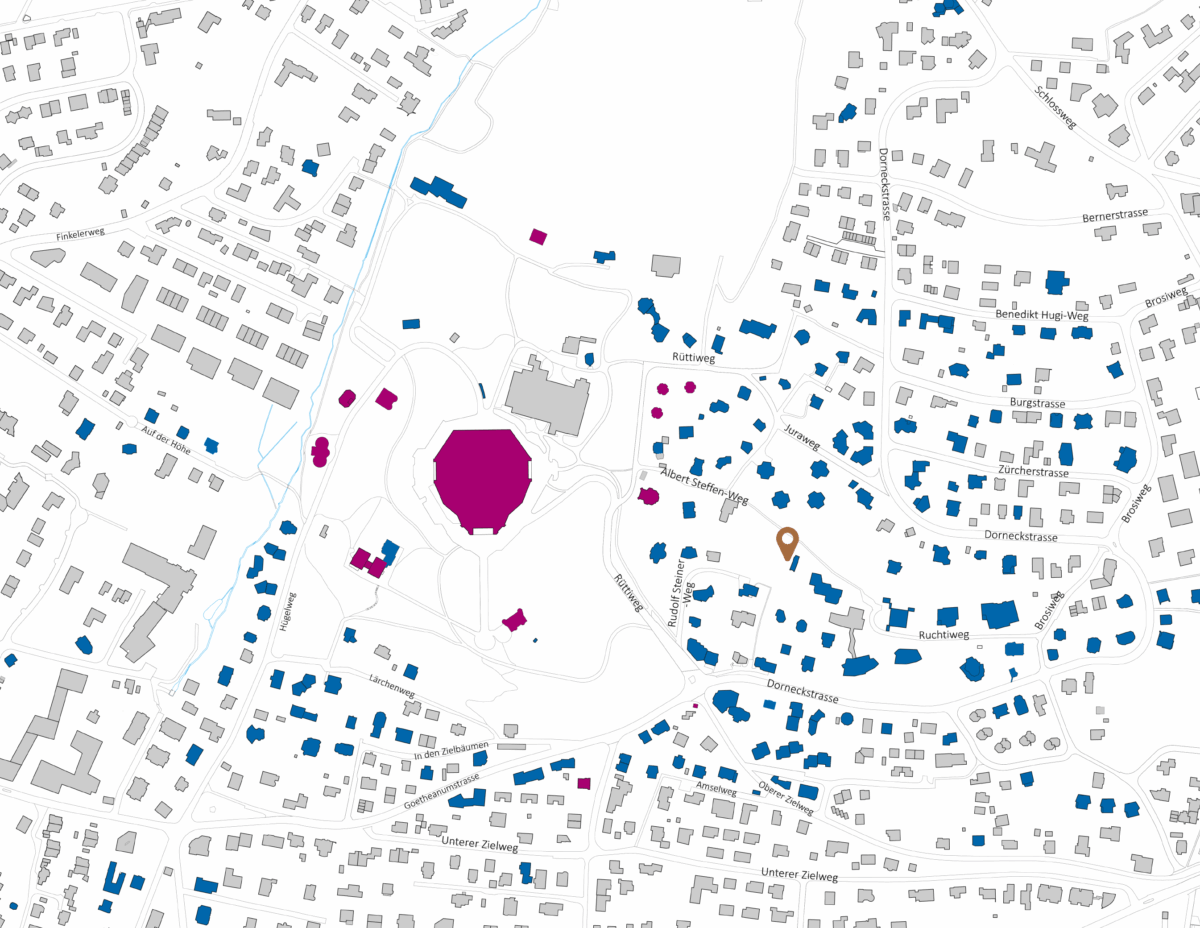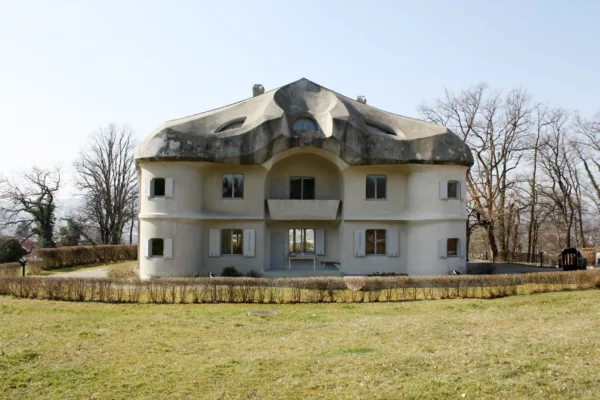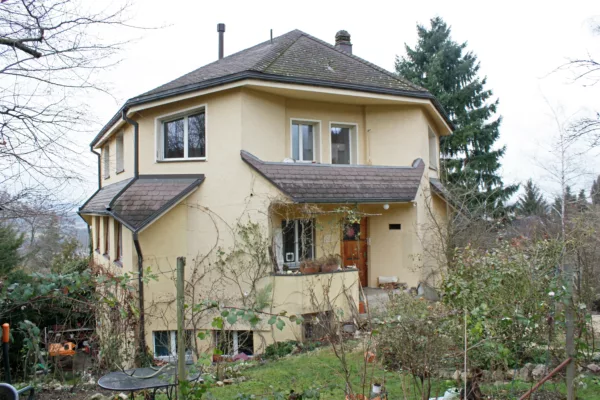House Moser
Ruchtiweg 15
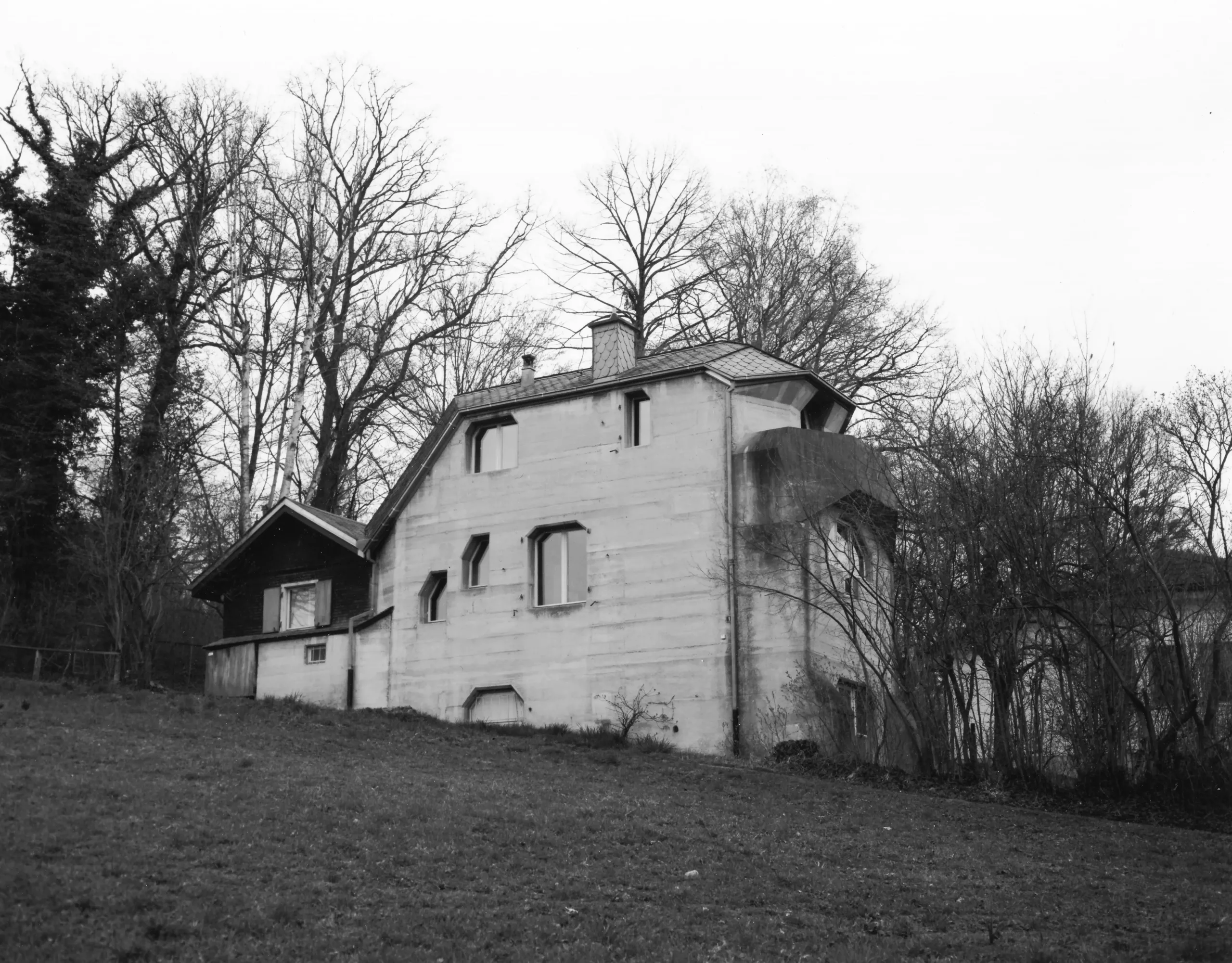
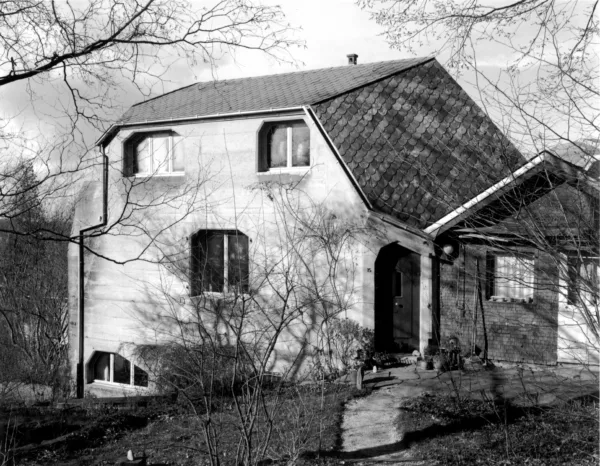
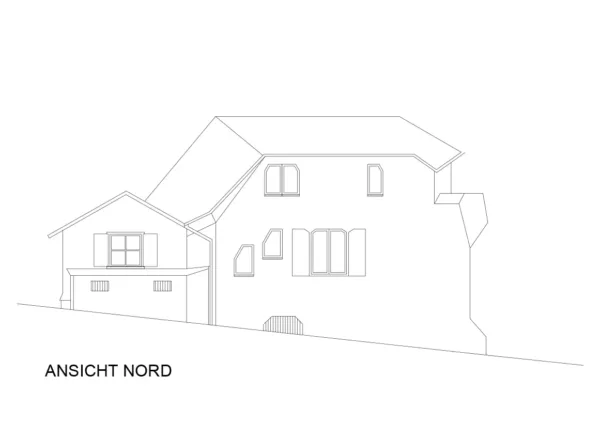
Built: 1926
Architect/builder: Otto Moser
The “railroad car”
In the mid-1920s, the young architect Otto Moser (1898 to 1966) was given a narrow, elongated strip of building land for his own home on the far north-eastern edge of the large area known as the South Colony. He had been working in the Goetheanumunfeld since the early 1920s. Various detached houses built during the construction of the second Goetheanum were designed by him or with his involvement. He was regarded as “tried and tested and reliable” and was expected to build very efficiently.
Many of his houses show a distinctly individual, unmistakable signature: rather crystalline, broken surfaces, bay windows that point towards important visual axes. Examples can be found in the House of the Seven Dwarfs or the House of Individuality.
Moser’s own house shows a similar materialization: exposed concrete on the outside, wood panelling on the inside, a roof with Norwegian slate. In contrast, it is very restrained in its design. However, it clearly shows the orientation towards the valley, the support against the slope, the inviting entrance to the south and the surprisingly natural connection to the small wooden building. Due to the dimensions of the plot, the house is very slender and space-optimized. The association that Albert Baravalle made with a railroad carriage cannot be entirely dismissed.
Moser’s relationship with the circle of architects in Dornach was always somewhat strained, if the testimonies of his contemporaries are to be believed. And the house also looks a little like a hermitage on the edge of the forest, on its own and yet in dialogue with the Goetheanum.
Images: © Jolanthe Kugler | Image “Railroad car © Baravalle Archive
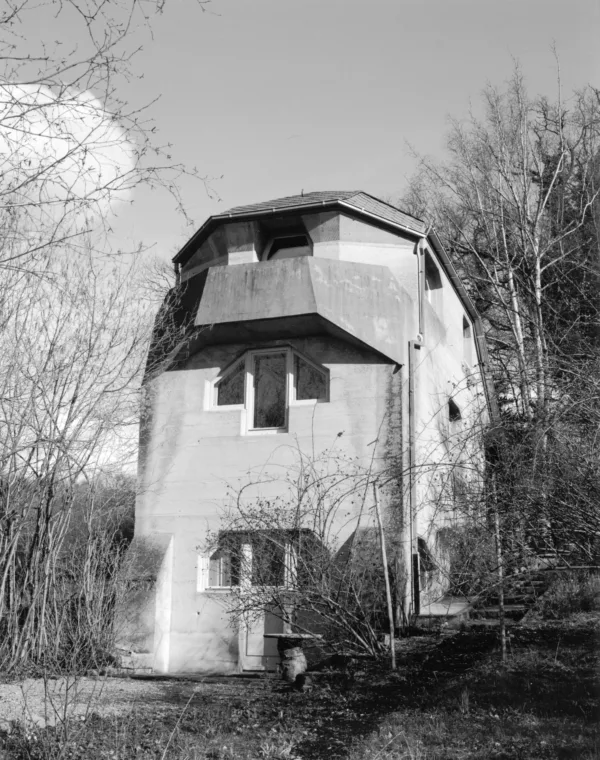
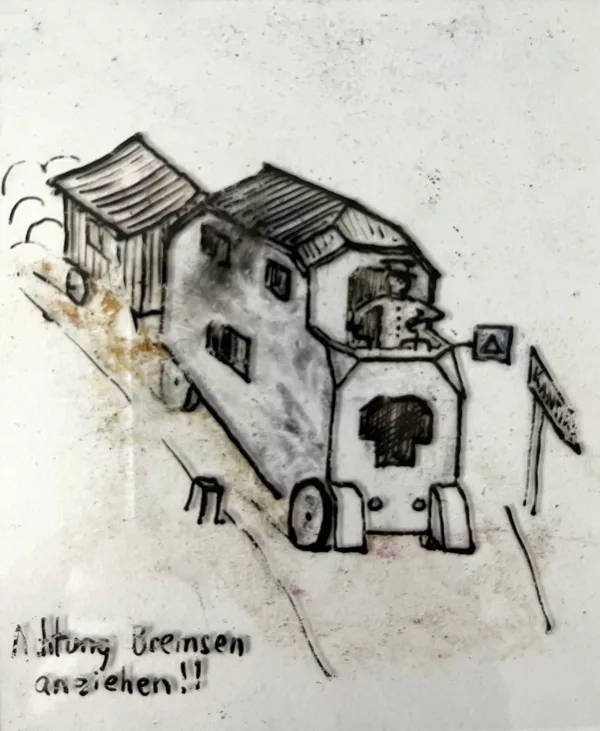
Location
